Thesis: Sequencing War
The reports of the death of sequencing is greatly exaggerated
Great appreciation to the founders in the sequencing space for speaking with me as part of this research. Special thanks to Shoumik Dabir, Wesley Keelan, and Akira Dunham for their comments/feedback/assistance.
There is a lot to be said about the parallels between semiconductors and sequencing. Semis has Moore’s Law and biotech has Eroom’s Law. Illumina seems to be analogous to Intel: increased miniaturization, density, and lower costs. Much can be debated about how much weight this analogy holds, but what if there are seeds of truth in this reductionist and simple view?
I think there is, and that introduces wide implications. If sequencing is in the in the early innings of computing, what will the trajectory of evolution be? In a world that is fighting over semiconductor supremacy, will sequencing supremacy be next? Today, investors are ambivalent to publicly traded sequencing companies. The negative story is compelling: growth is slowing or limited, utility is plateauing… Today, few believe in the positive story - that reading the code of life is a key technological development that will revolutionize industry.
—Andrew Hui
1. Sequencing is taking the same evolutionary path as semiconductors
2. Falling DNA sequencing costs unlock greater economic upside
3. Sequencing is key to enabling a biological paradigm shift
4. The value chain of sequencing has matured as sequencing costs have come down
5. Sequencing design space revolves around molecules and signal type
6. Enhancing clinical utility of the genome depends on the quality of datasets
7. The application layer has been the golden goose of the sequencing market
8. Sequencing is at a “strategic inflection point”
9. 10x technology factors will continue to drive value of the sequencing market forward
10. The next geopolitical battleground will be sequencers
11. Genomic data is the key to winning the biotech revolution
Disclaimer: The information in this post is not intended to be and does not constitute investment or financial advice. You should not make any decision based on the information presented without conducting independent due diligence.



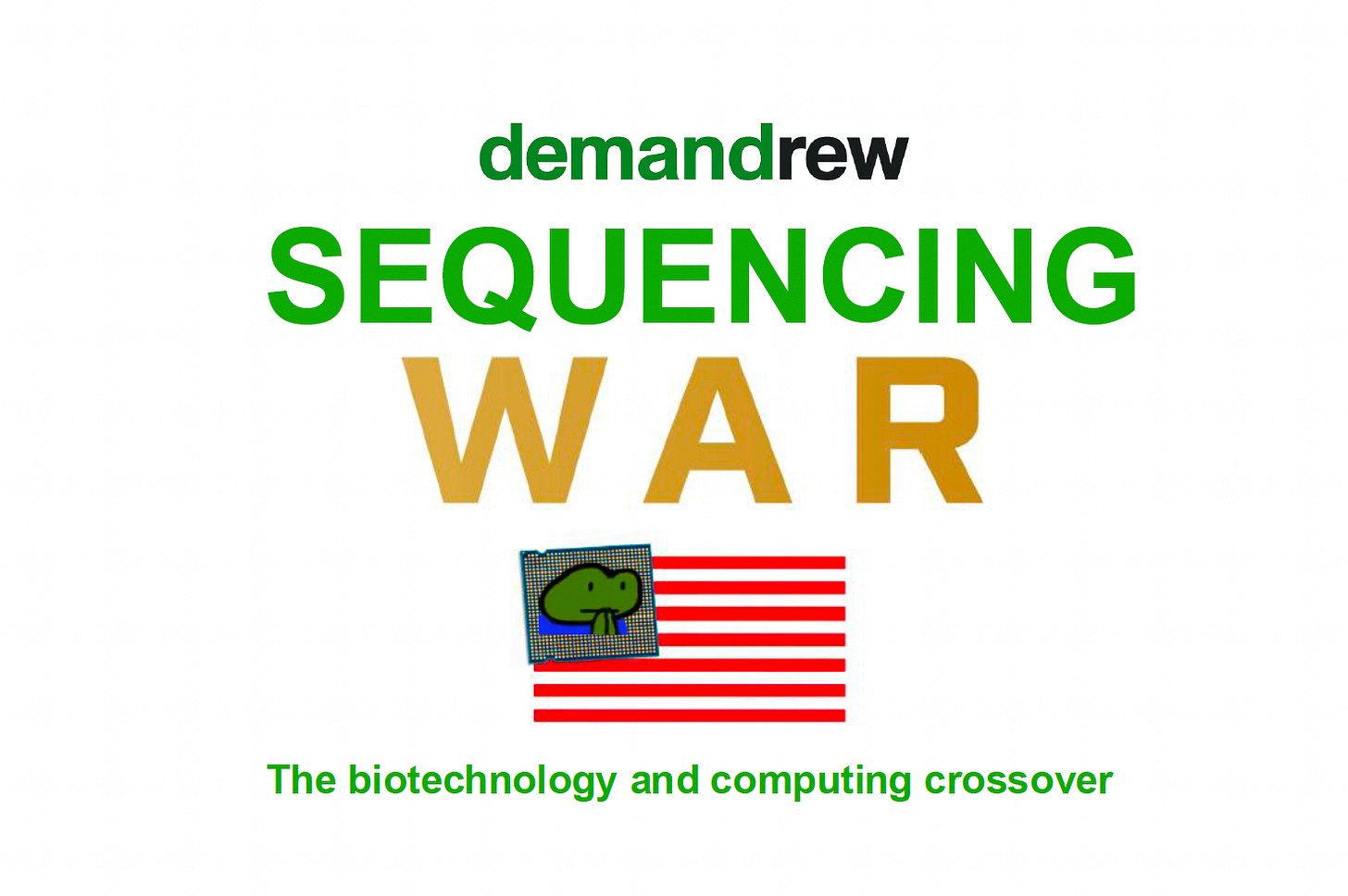
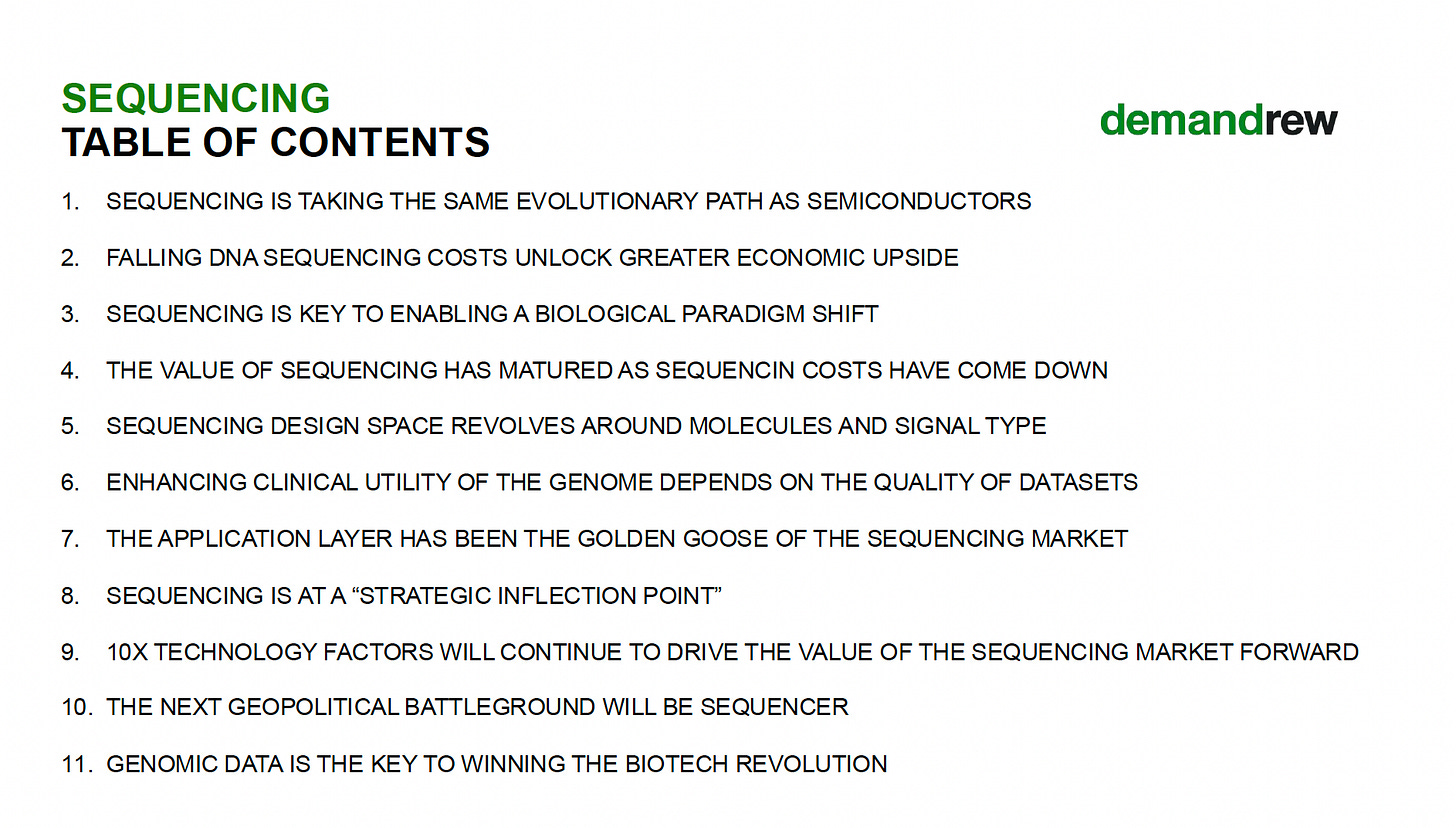
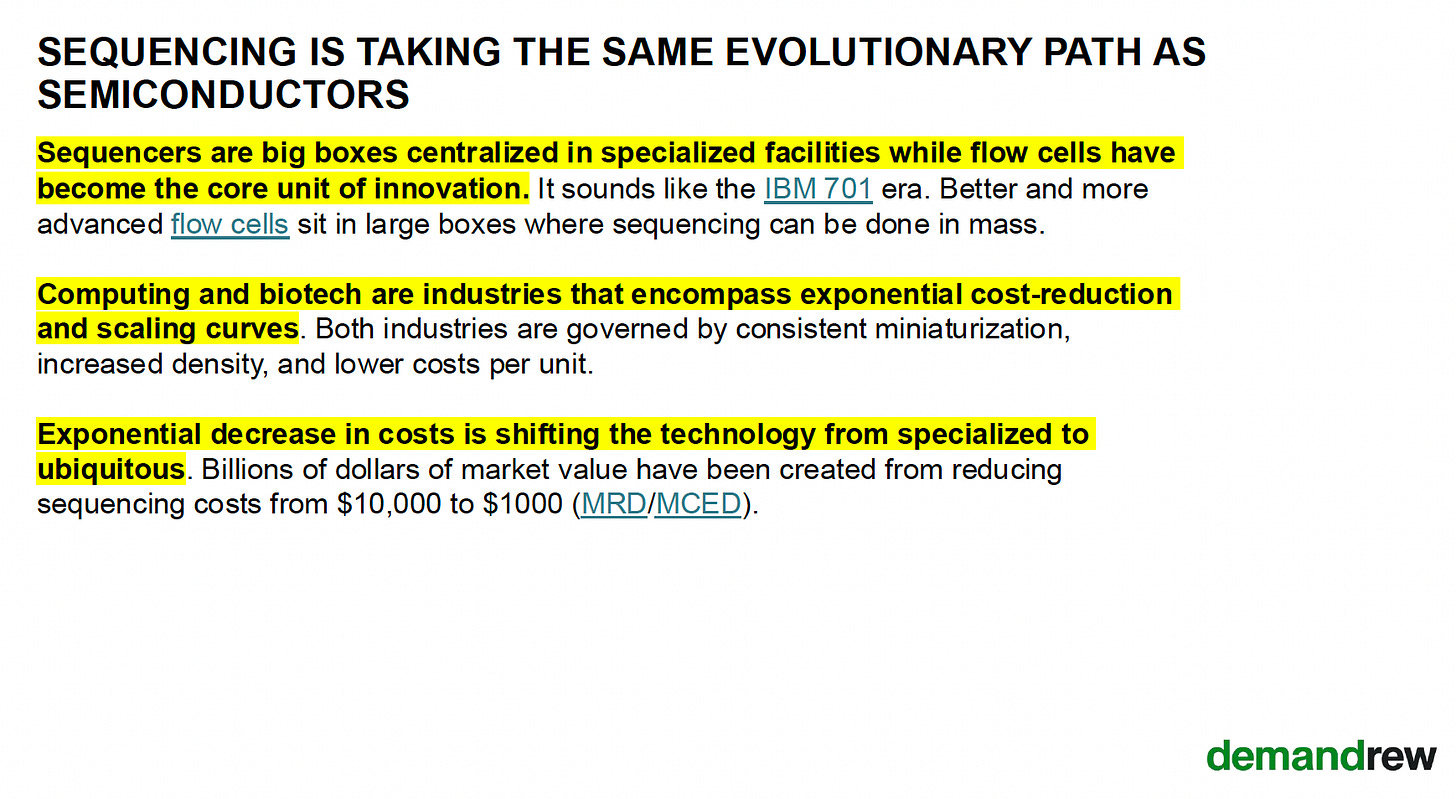
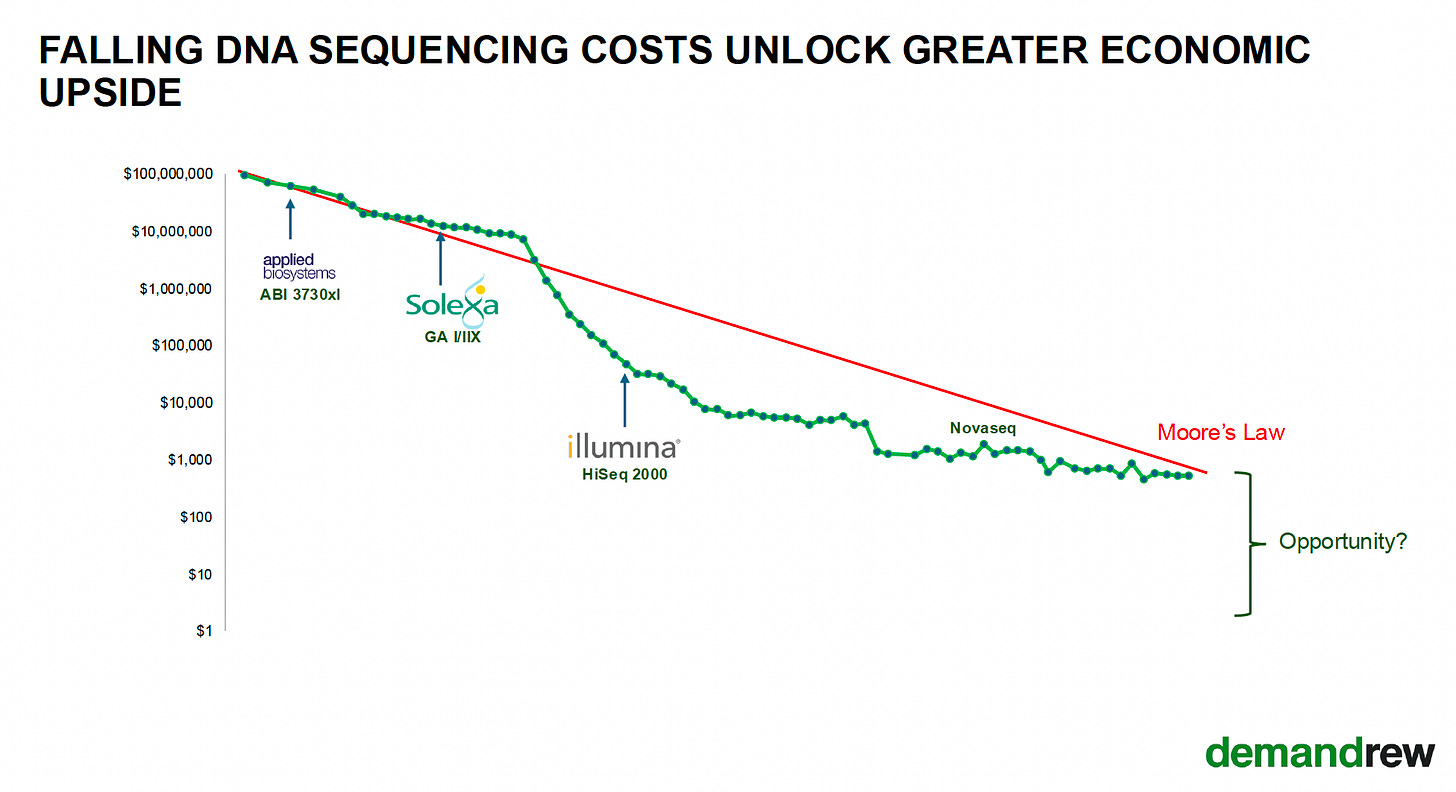
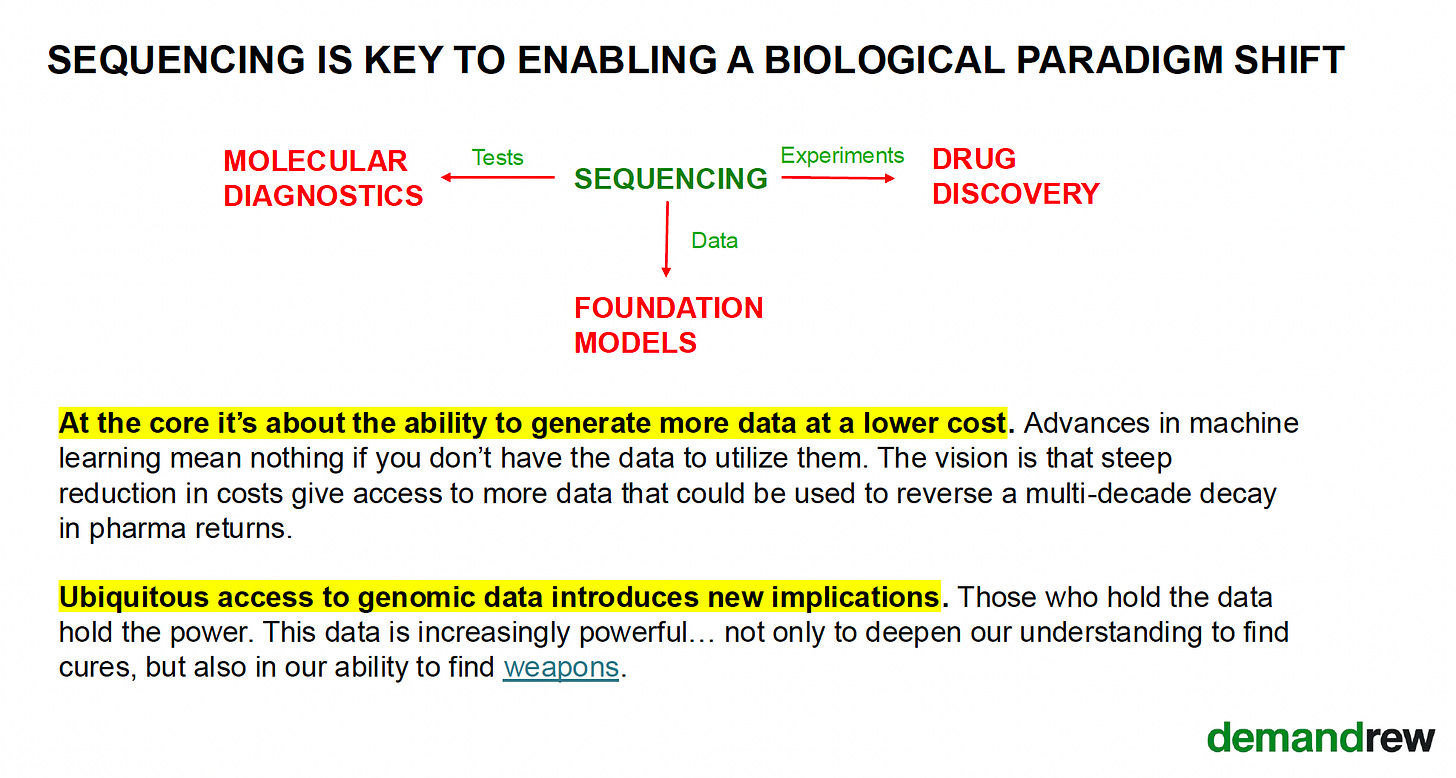
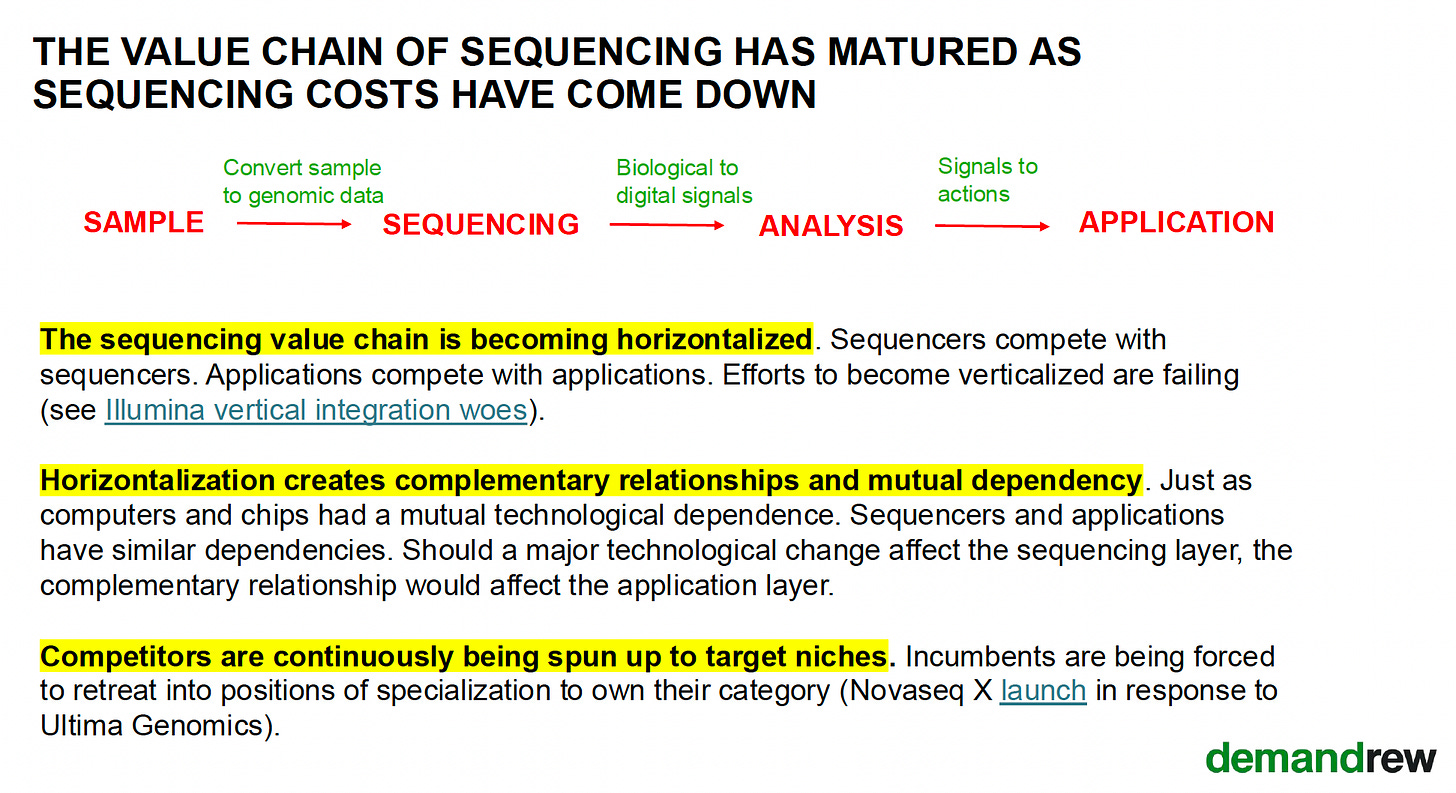
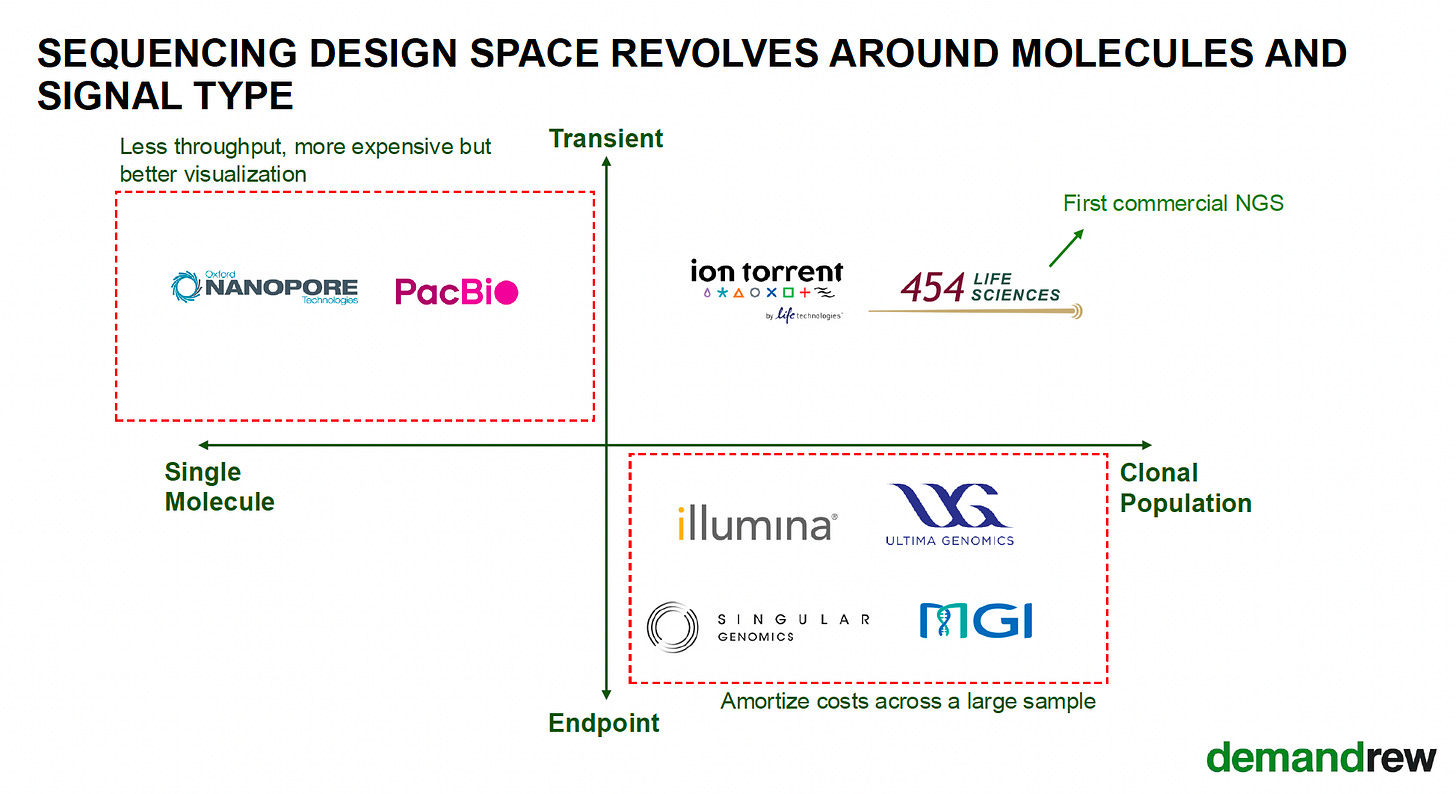


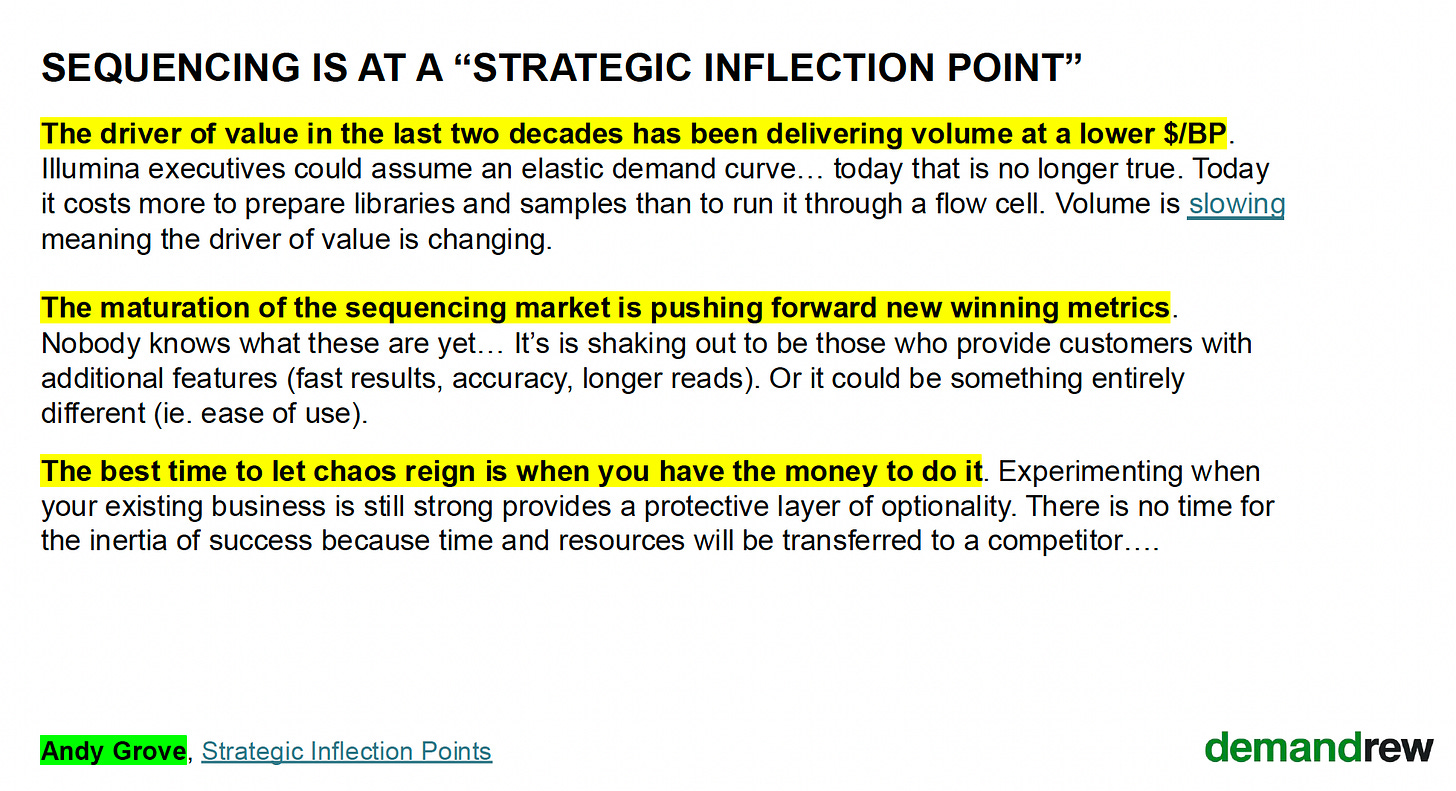
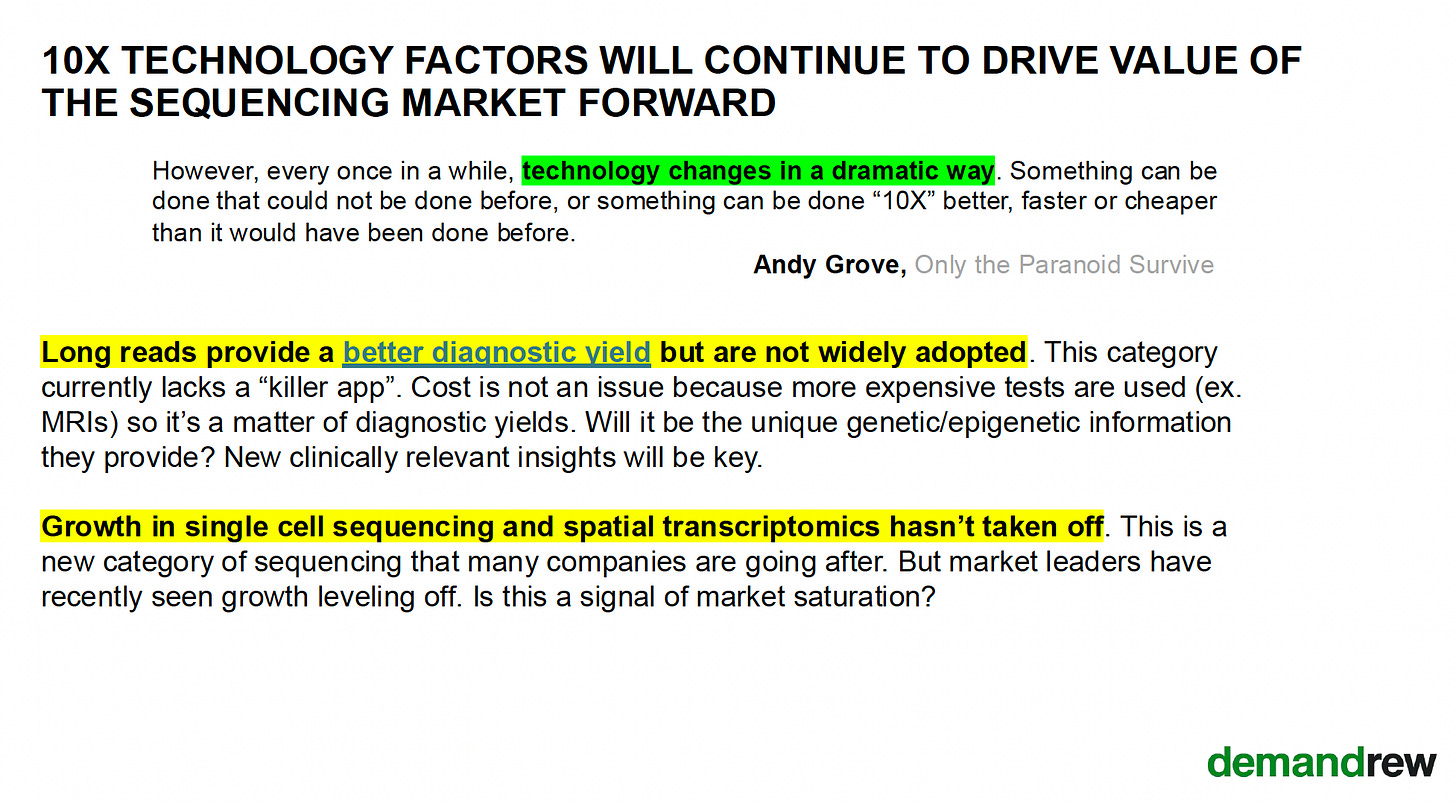
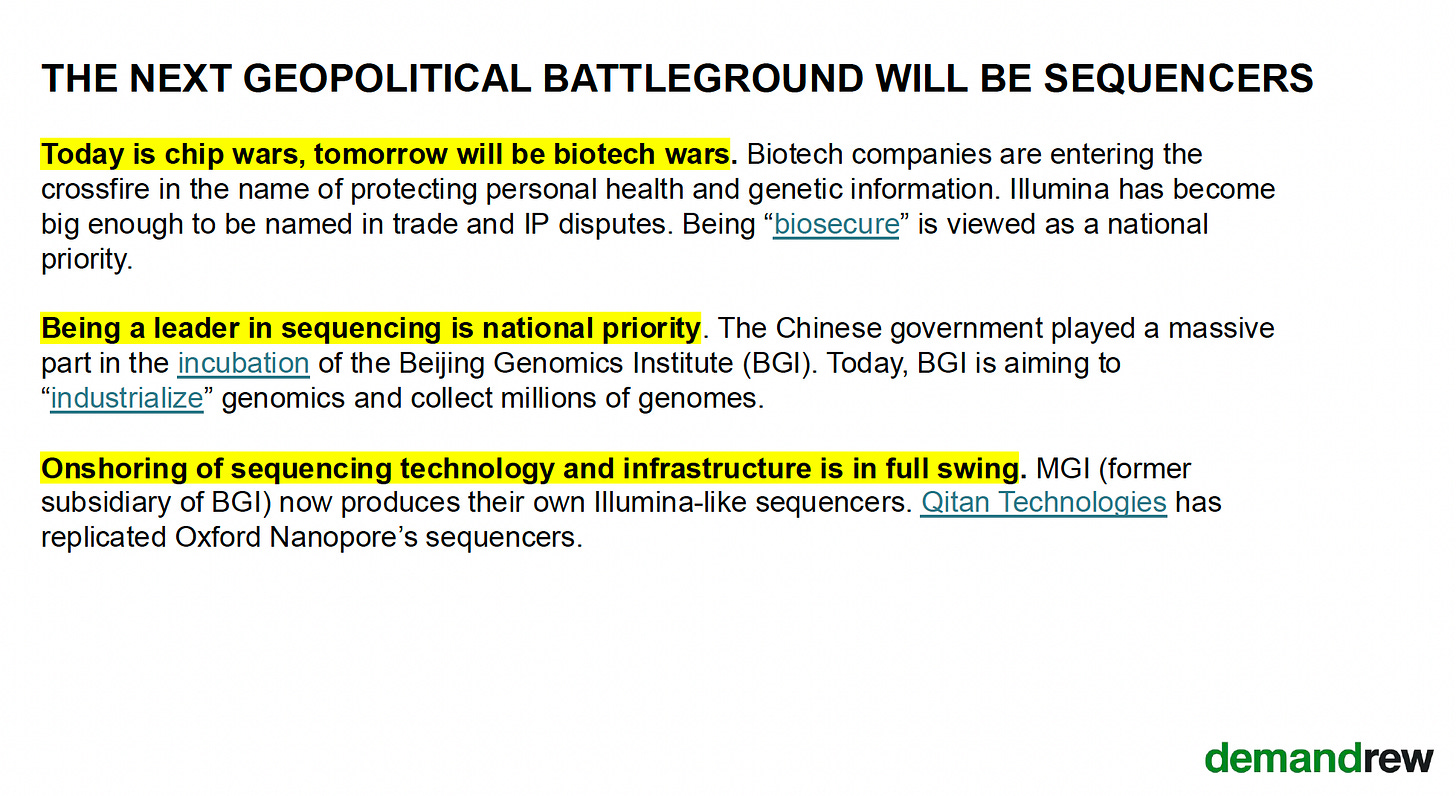
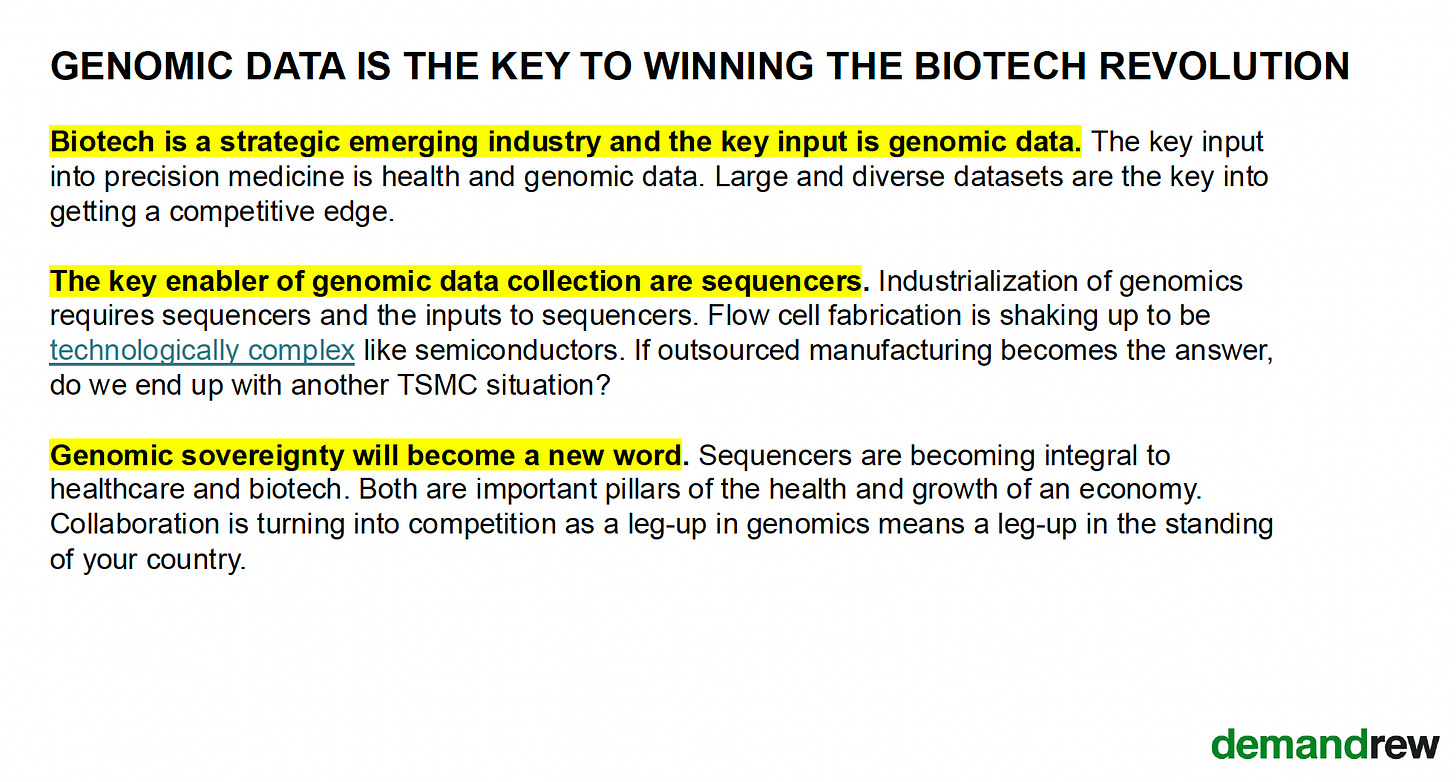
🇨🇦🐐